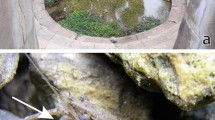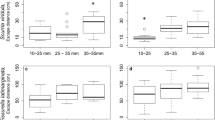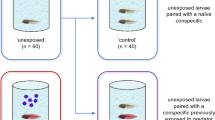Abstract.
The loss of behaviors that organisms use to avoid predation may serve as a sensitive indicator of pollution. We tested the hypothesis that a correlation exists in the field between heavy metal levels and antipredator behaviors. We examined the antipredator behavior of aquatic caddisfly larvae and snails at sites in the Coeur d'Alene basin of Northern Idaho which varied in their levels of heavy metals. We tested the antipredator response of Physella columbiana snails at 10 polluted lakes downstream from the Bunker Hill Environmental Protection Agency (EPA) Superfund cleanup site. We then compared their behavior to snails at 14 reference lakes. We placed the snails in a plastic testing apparatus, exposed them to an extract of crushed snail, and then monitored their movements to a normally preferred shaded area. We also tested the behavior of caddisfly larvae from 36 sites from a total of 6 streams/rivers adjacent to the Superfund site. Sites were located upstream and downstream of abandoned mines. We located active larvae of four genera, simulated predation by grasping the animals between thumb and forefinger (the larvae respond to being grasped by withdrawing into their case), lifted them from the water for 3 s, and then placed them in an adjacent, slower section of the stream. We then recorded how long it took each larvae to partially emerge from its case and attempt to move away. Unlike reference site snails, snails from heavy metal–polluted environments failed to exhibit antipredator behaviors in response to crushed conspecifics. These results are consistent with previous laboratory studies. We found no effect of heavy metals on the antipredatory behavior of caddisfly larvae.
Similar content being viewed by others
Author information
Authors and Affiliations
Additional information
Received: 20 July 1999/Accepted: 5 October 1999
Rights and permissions
About this article
Cite this article
Lefcort, H., Ammann, E. & Eiger, S. Antipredatory Behavior as an Index of Heavy-Metal Pollution? A Test Using Snails and Caddisflies. Arch. Environ. Contam. Toxicol. 38, 311–316 (2000). https://doi.org/10.1007/s002449910041
Issue Date:
DOI: https://doi.org/10.1007/s002449910041




